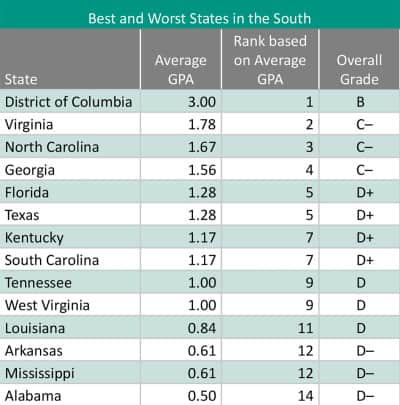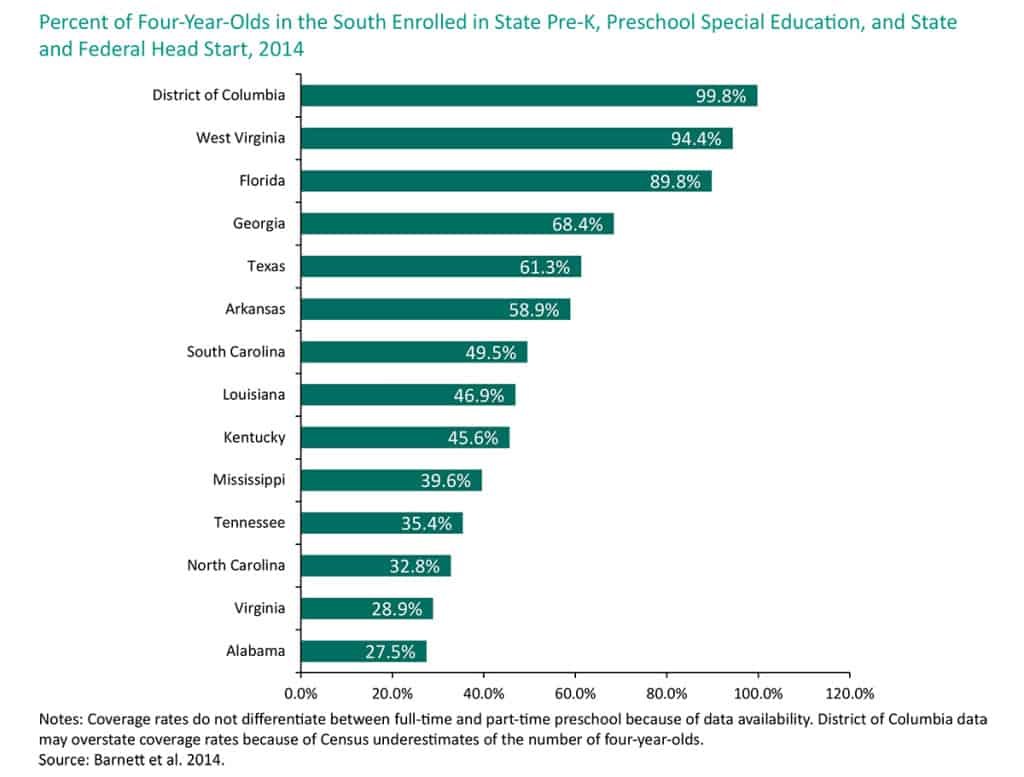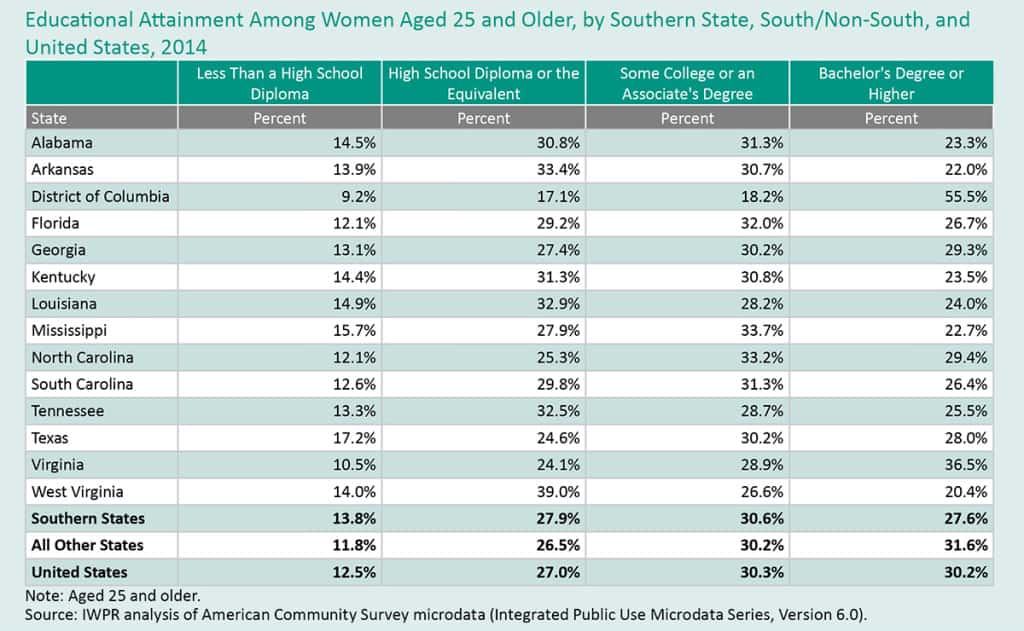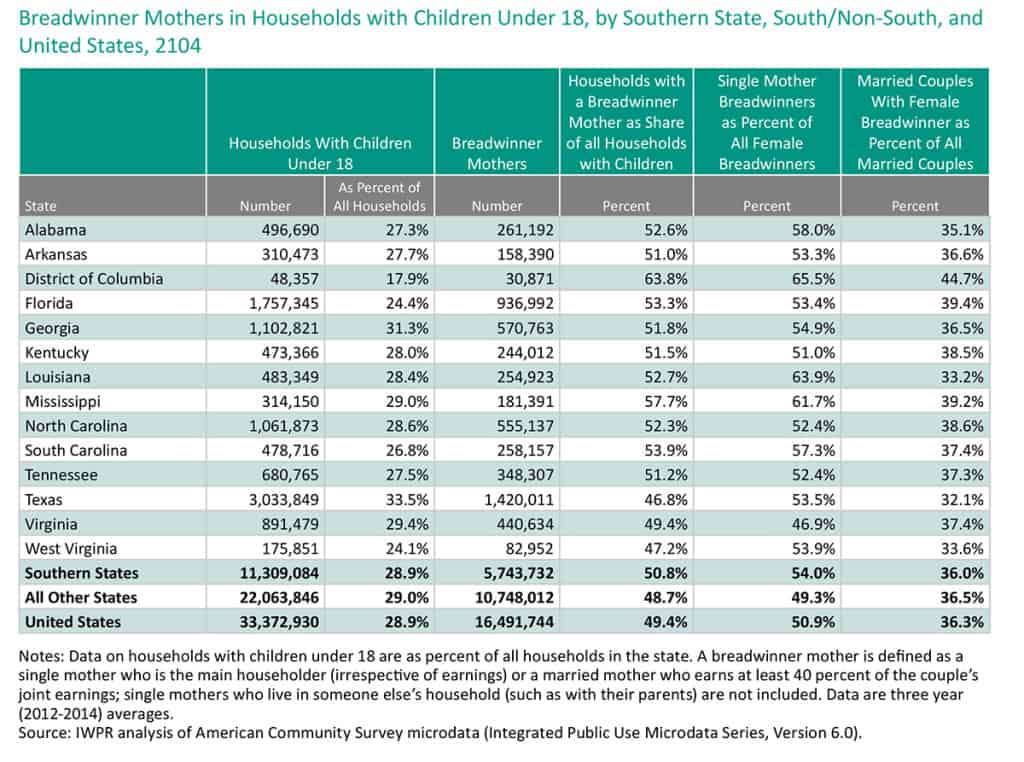

The Status of Women in the States project recently released its massive Status of Women in the South report, a look at how women are faring in a region that typically lags behind the rest of the country in measures of social and economic well being, and in levels of educational attainment.
And though the report focuses on the South region as a whole, it does provide state-level specific data, including an interactive data sheet for North Carolina.
How do women fare in the South?
Key findings from the report note that across the region women are underrepresented in government, and earn less than their male counterparts, 79.5 cents on the dollar. Poverty is higher for women in the region than in other parts of the country, 16.4 percent compared to 13.7.
Almost one-in-five women living in rural areas in the South live in poverty. When disaggregated by race, the data show that nearly 33 percent of rural African-American women live in poverty.
Women over the age of 65 in the South have a higher poverty rate than the rest of the country, 11.8 percent compared to 10.2. However, again, when that data is disaggregated by race, the percentages are greatly skewed, with one-in-five Native American, Hispanic, and African-American women living in poverty, compared to only 8.8 percent of white women over the age of 65.
Women in the South also have poorer health outcomes than those in the rest of the country, including higher rates of heart disease, diabetes, and AIDS.
How does North Carolina compare to the rest of the South?
The project assigned letter grades to each state to evaluate the best and worst states for women in the region. The report’s executive summary explains that grades were given to each state based on different measures: political participation, employment and earnings, work and family, poverty and opportunity, reproductive rights, health and well-being, and violence and safety.
Though North Carolina received a C-, it sits at the top of the region’s rankings, third behind Virginia and the District of Columbia (The report defines the South as Alabama, Arkansas, Florida, Georgia, Kentucky, Louisiana, Mississippi, North Carolina, South Carolina, Tennessee, Texas, Virginia, and West Virginia; and including the District of Columbia.)


And though the report does not include a separate education category in determining its final state grades, education measures are noted throughout the report.
In the section entitled “Work & Family,” the report notes that North Carolina is only one of four Southern states where the average annual cost of keeping an infant in center-based care exceeds the annual public university tuition and is only one of three states in the region where the cost of infant center-based care exceeds 40 percent of the median annual income of a single parent (p. 73).
In terms of enrollment in pre-K programs, North Carolina sits near the bottom of the region with only 32.8 percent of its four-year olds enrolled in a pre-K program


In the “Poverty & Opportunity” section, the report examines educational attainment rates for North Carolina and the South. North Carolina is third in the region with the highest percentage of women with a bachelor’s degree or higher, 29. 4 percent (p. 102) and ranks near the bottom of the region in percent of women who have only a high school diploma, 12.1 percent (p. 103).


How does this data help inform our education policy?
As the executive summary notes, “In half of all families with children younger than 18 in the South, mothers are breadwinners in their families, meaning they are either a sole provider or a married mother who earns at least 40 percent of the couple’s total earnings.”


It’s important to remember that as more women become the sole, or more prominent, source of their family’s income, they do so with a lingering income disparity in comparison with their male counterparts. And women are not just becoming the sole means of financial support for families, they are also increasingly representing a larger portion of the postsecondary student population in our universities and community colleges, more and more are becoming private business owners, and, as the new EdData Dashboard informs us, they are overwhelmingly the people who teach and care for our children in our state’s schools.
EdNC has discussed the issues of gender disparities in the past, and how on some measures those gaps are shrinking, but there are still hurdles for women in the workforce and for mothers seeking adequate care for their newborns, infants, and toddlers — all critical periods of a child’s development when the foundation for learning later in life is established.
There is lots of data to explore in the 259-page report, including measures on such education-related health issues like prenatal care, infant mortality rates, and low birth rates.
Dig in and let us know what data points speak to you and how it might inform education policy making in North Carolina.
You can read the full report go here. You can dive into the data here. Read about the report’s methodology here.


